The Making of XX: Interview with Junichi Fujisaku (2)
Junichi Fujisaku, the acclaimed director of the TV series Blood+, talks about his new project, the mobile phone comic XX. This is the second part of our long interview with him.
XX is a joint collaboration between young and veteran creators at Production I.G to produce a mobile phone manga in an animation studio.
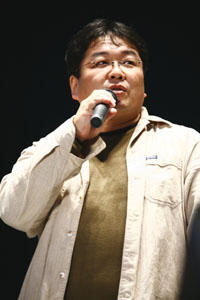 | Junichi Fujisaku - Born on August 6, 1967. Director, scriptwriter, game designer and novelist. He joined Production I.G as Game Production Department Chief Director, but soon became one of Team Oshii's core members. With Kenji Kamiyama, he participated to the creation of the theatrical feature Blood: The Last Vampire (2000). The girl in sailor suit fighting monsters with a Japanese sword was in fact Fujisaku's idea. For the Blood franchise he also directed the game version and wrote the novelization. While being the mastermind behind the hit game series YaruDora (1998), Fujisaku also gave his valuable contribution to the expansion of the Ghost in the Shell world, writing the scripts for many episodes of the Stand Alone Complex series, producing and directing the game version for PS2, and writing three related novels. Recent credits include the scripts for Otogi Zoshi and the xxxHOLiC and Tsubasa Chronicle theatrical features. In 2005 he debuted as TV series director with Blood+. |
It seems like you are implementing a very unique approach to a mobile phone manga.
In a normal comic production, once you have a script, you leave everything to the manga artist, but I felt it wouldn't be fun to do it the conventional way, so I asked if Production I.G could do the picture as well. And we decided to adhere to the animation production method and involve storyboarders and episode directors in the process.
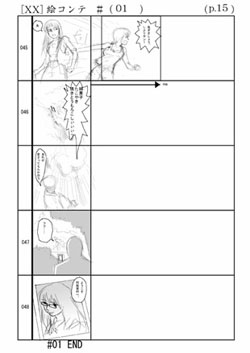
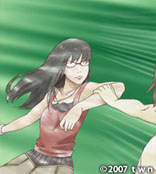
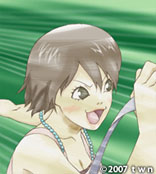
This is a comic, but it sounds as if it is made more like an animation.
I'd say it is rather closer to the YaruDora series games I've done before. YaruDora was a video game basically composed of animation sequences, and for this project, animation parts were replaced by comics. My experience in anime production is evident in how I make use of the space element in the screen. And as for presenting comics on a mobile phone, my experience in games comes in handy.
You mean to say that the drawings are done at Production I.G?
That's correct. The actual production is being made here at I.G, including photography and coloring. I had this idea of applying the final coloring in the way people do with color manga. So if you enter I.G's digital paint room, you can see some people working on Guardian of the Sacred Spirit and other on XX.
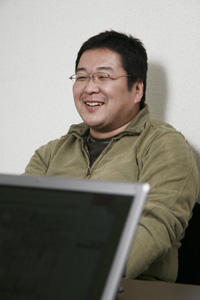 | "My experience in anime production is evident in how I make use of blank spaces in the screen. And as for presenting comics on a mobile phone, my experience in games comes in handy." (Junichi Fujisaku) |
I suppose there are limitations because you are using mobile phones as a medium. What is the biggest difference from anime and games?
I must say the size of the screen. And also a reader must press a key to proceed to the next page. That means they take control of the timing, whereas in anime, we, the creators, control it entirely.
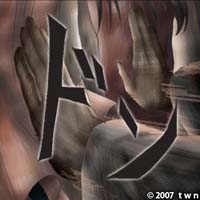
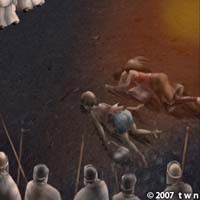
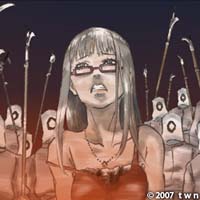
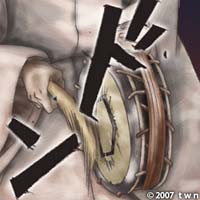
I suppose compiling a small screen is a tricky process.
Yes, the initial layout setting determines the outcome to some extent. I try to create pictures that show motion. From the storyboard stage, I do put a lot of consideration into motion. Our animators contribute their ideas too. I intentionally recruited young animators from Production I.G to work on this project. I hope these young animators utilize this chance to work without restrictions to develop their capacities. Although this cannot be seen by the readers, I'd like to point out that the creative potential I see here is another feature of XX.
(2 - to be continued)
© 2007 twn

![WORK LIST[DETAILS]](/contents/works/design/images/left_title.gif)



 terms of use
terms of use